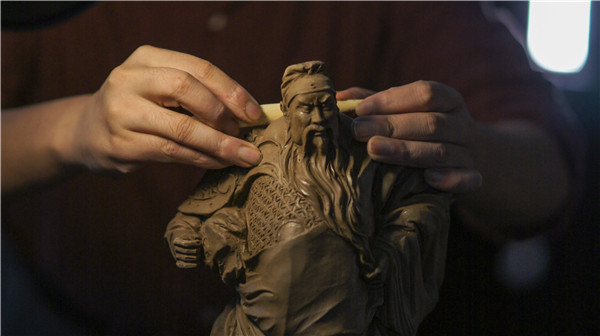 |
|
[Photo provided to China Daily] |
That partly explains the gallery's banner.
Zhang began learning the trade from his father and grandfather as a child. He jokes the reason he inherited the tradition is he didn't have any other toys.
"I decided to take over their jobs when I was a kid and never considered doing anything else," he says.
"The principles and techniques are naturally learned through practice, and it's difficult to summarize them in words."
Zhang claims with pride that his family continued to pass down the craftsmanship despite times of war and social upheaval.
The family tradition was founded by Zhang Mingshan, who was born in Tianjin in 1826.
His folk art won acclaim. He even once worked for the Qing Dynasty's (1644-1911) royal family.
Local people started calling him "Niren Zhang" around the time he turned 18.
Ancient literary characters remained a primary theme in his works. But he also portrayed realistic-looking ordinary people.
It was popularly said of his works: "Their only difference from living people is that they don't breathe."
"There was no photography in China at that time, so Chinese people were really surprised to see something so vividly portrayed," Zhang Yu says, smiling.
The family tradition has blended East and West from the start, likely due to Tianjin's status as a city that opened to Western culture relatively early. Almost all the implements used to shape the figurines, for instance, came from the West, Zhang Yu explains.